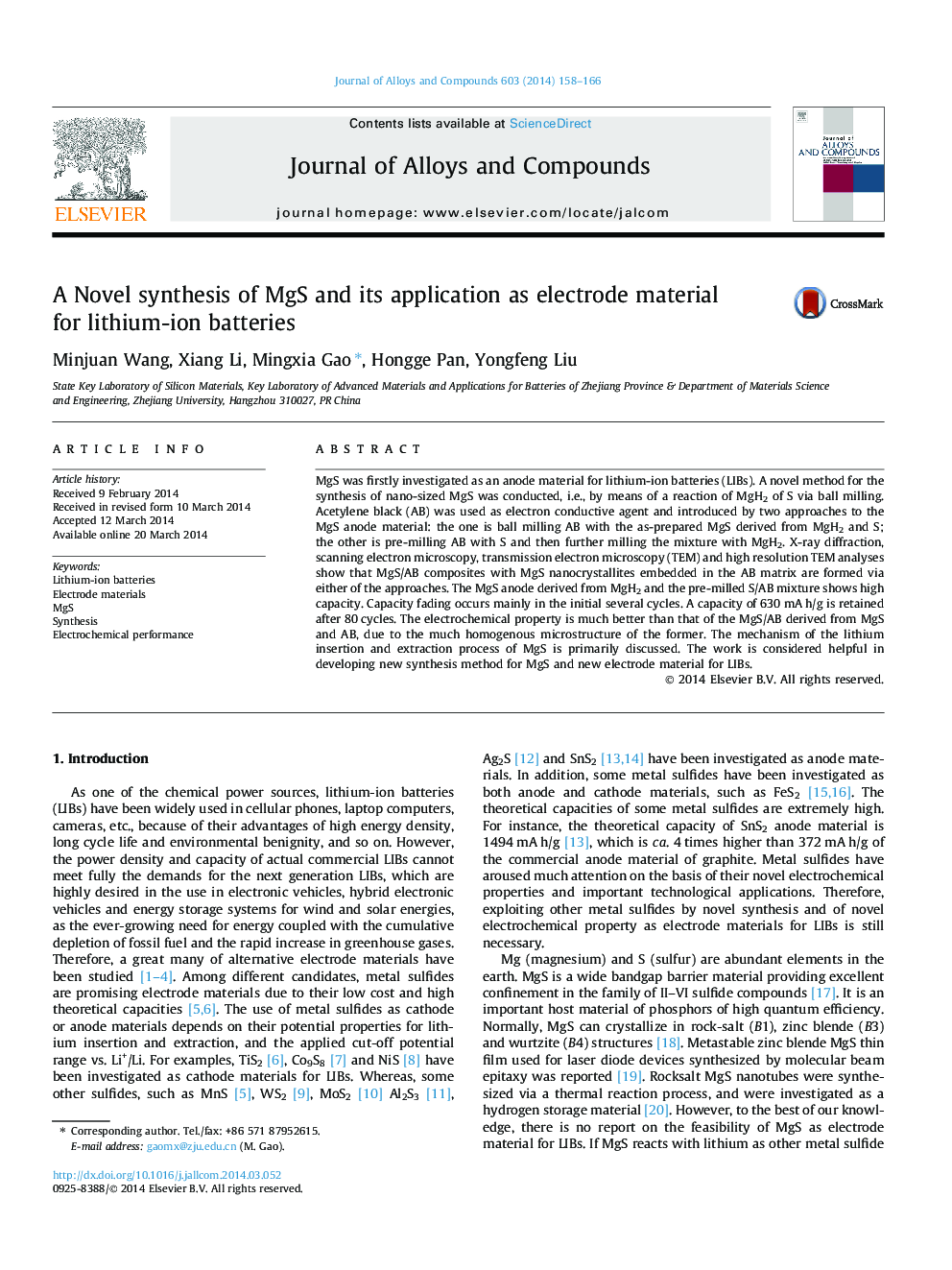| Article ID | Journal | Published Year | Pages | File Type |
|---|---|---|---|---|
| 1611185 | Journal of Alloys and Compounds | 2014 | 9 Pages |
•Nanocrystallite MgS was synthesized by means of a reaction of MgH2 of S via ball milling.•MgS was firstly investigated as anode material for lithium-ion batteries (LIBs).•MgS with acetylene black introduced by ball milling shows superior electrochemical property.•The mechanisms of the lithium insertion and extraction processes of MgS are discussed.•The work is considered helpful in developing new electrode material for LIBs.
MgS was firstly investigated as an anode material for lithium-ion batteries (LIBs). A novel method for the synthesis of nano-sized MgS was conducted, i.e., by means of a reaction of MgH2 of S via ball milling. Acetylene black (AB) was used as electron conductive agent and introduced by two approaches to the MgS anode material: the one is ball milling AB with the as-prepared MgS derived from MgH2 and S; the other is pre-milling AB with S and then further milling the mixture with MgH2. X-ray diffraction, scanning electron microscopy, transmission electron microscopy (TEM) and high resolution TEM analyses show that MgS/AB composites with MgS nanocrystallites embedded in the AB matrix are formed via either of the approaches. The MgS anode derived from MgH2 and the pre-milled S/AB mixture shows high capacity. Capacity fading occurs mainly in the initial several cycles. A capacity of 630 mA h/g is retained after 80 cycles. The electrochemical property is much better than that of the MgS/AB derived from MgS and AB, due to the much homogenous microstructure of the former. The mechanism of the lithium insertion and extraction process of MgS is primarily discussed. The work is considered helpful in developing new synthesis method for MgS and new electrode material for LIBs.
